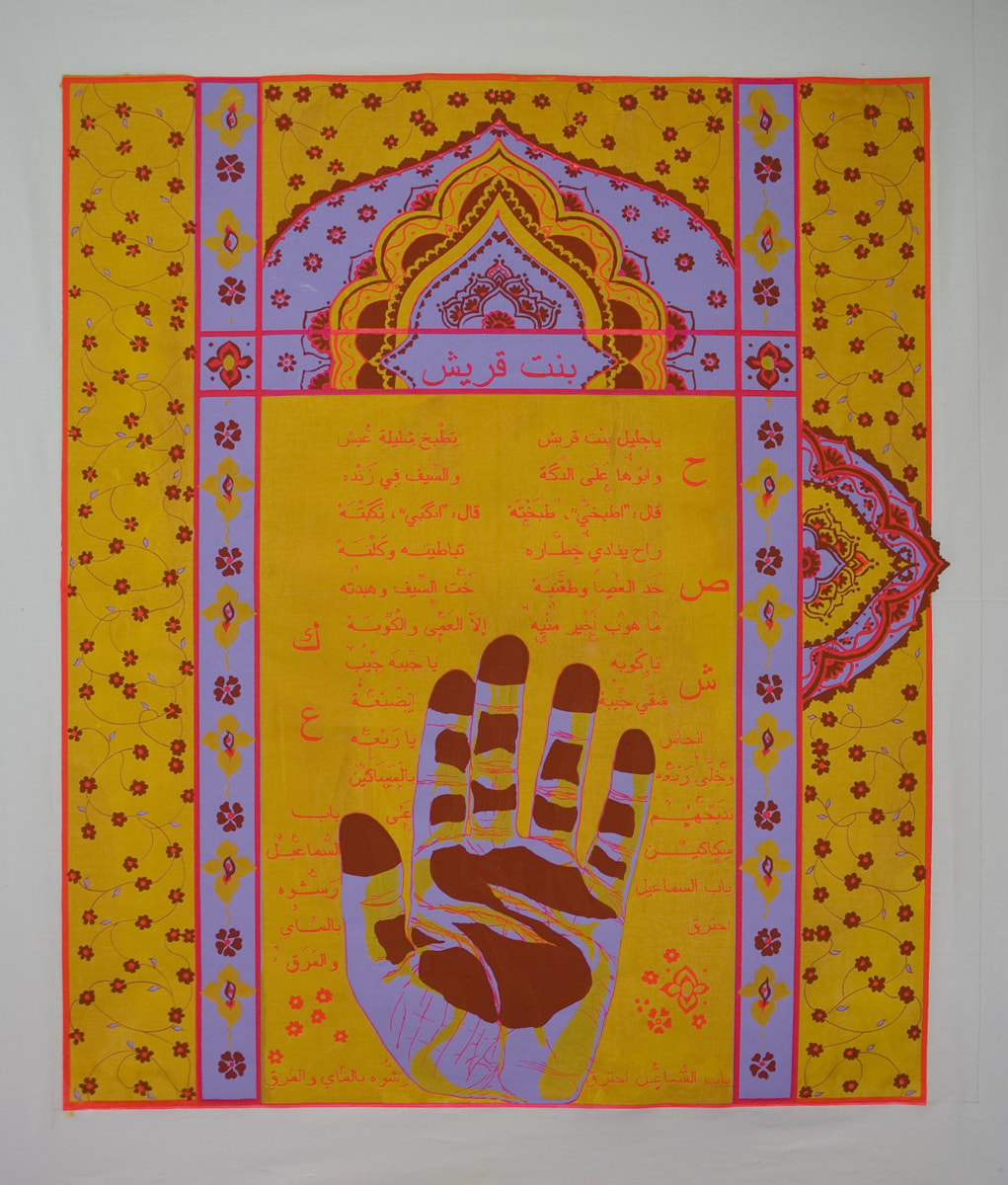|
Fist of Night or Daughter of Quraish 2018 Screen printing and painting 24 x 32 inches Inspired by Qura'nic illumination this image display a traditional henna pattern named "Fist of Night" because women and girls put a henna paste morsel in their palms, make a fist, wrap it firmly and sleep on it. In the morning the henna marks form along natural palm lines. The calligraphy is of lyrics of girls traditional song that depicts fragments of a story of a woman getting mad at her domestic patriarch. This print is part of a body of work entitled "Green In The Market, Red In Mother's Hand". It depicts traditional henna styles in Hofuf, Saudi Arabia, my home town. I have documented eight henna designs by interviewing local women above 60 years. Prior to 1940s, the patterns were limited to a small repertoire and were geometric, symmetrical, reproducible and had descriptive names. The name of this design is "The Caged One". In this body of work, I have paired the design with local folk tales told by women and usually were stories that empower women. More of this series |
|
The Caged One or The Gum Chewer 2014 Intaglio. Ink on paper. 32 x40 inches - 81 x 102 cm Edition: 1 This print is part of a body of work entitled "Green In The Market, Red In Mother's Hand". It depicts traditional henna styles in Hofuf, Saudi Arabia, my home town. I have documented eight henna designs by interviewing local women above 60 years. Prior to 1940s, the patterns were limited to a small repertoire and were geometric, symmetrical, reproducible and had descriptive names. The name of this design is "The Caged One". In this body of work, I have paired the design with local folk tales told by women and usually were stories that empower women. The story here is titled "The Gum Chewer" More of this series |

